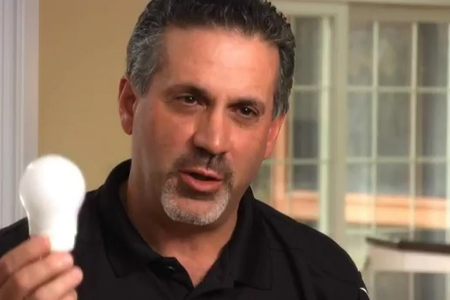By Rocky Kistner, NRDC
About an hour from the birthplace of Thomas Edison, in a cul-de-sac of a suburban industrial park outside Cleveland, is the biggest energy-saving light bulb company you never heard of. That company—TCP Inc—is part of a money-saving lighting business that is revolutionizing the way consumers think about light in their homes.
For more than a decade, TCP (Technical Consumer Products), has been quietly stealing the thunder—and engineering staff—of its much more recognizable Cleveland neighbor, GE. But TCP has become the mouse that roared. It’s leap-frogged larger traditional lighting companies in a global quest to make innovative energy-efficient bulbs of the future. Thanks to companies like TCP, new watt-cutting lights are an easy way for consumers to slash their their rising utility bills. And the bulbs will only get better.

TCP now produces more energy-efficient compact fluorescents (CFL) than any other, making in-house brands for giant consumer outlets like Home Depot. Company engineers continue to use their technical wizardry to improve light bulb characteristics, including new quick starting and dimable CFLs to highly efficient 50,000 hour LEDs that will save customers big bucks long into the future.
And starting next year, TCP will be producing a new and improved incandescent that is 50 percent more efficient. For those fans of Edison’s original bulb design, people can stop hoarding. TCP has solidified its role as an innovation leader by developing an energy-efficient incandescent with the same traditional shape, but that uses half the watts.
Also on tap next year are plans to expand its Cleveland engineering and warehouse facility to start making highly efficient CFLs. That’s a welcome relief for an economy desperate for new employment opportunities. TCP officials say even more U.S. jobs will be created as light bulb manufacturing becomes more automated, reducing the incentive to base plants overseas.
Bringing home jobs is an important objective of Ellis Yan, TCP’s founder and president. As a U.S. college student, Yan recognized the value of a more efficient light bulb, a technology that hadn’t changed much in a century. Yan grasped the importance of the CFL after it was invented by former GE engineer Ed Hammer (now a TCP consultant) during the energy shocks of the 1970s.
GE didn’t actually produce the early CFLs since there wasn’t an efficient way to make them. Each one had to be made by hand. So in 1993, Ellis and his brother Soloman formed TCP and began manufacturing them in their native China, a country where labor was cheap enough to hire thousands of workers to bending the glass into curly-q-bulbs one by one.
But times have changed. TCP quickly developed an automated system that now has the capacity to crank out nearly two million bulbs a day at its manufacturing plants in China. And more of those manufacturing jobs will be brought to the US next year when the company begins making CFLs at a new production line in Ohio.
Looking forward, TCP will continue to create more efficient bulbs, thanks in no small part to people like Tim Chen, TCP’s chief engineer. Chen worked for nearby GE until he was talked into joining TCP’s ambitious bulb designing team three years ago. Since then, Chen has helped the company overcome some of the most important CFL technical challenges; slow start up, no dimability and poor color temperature. TCP now makes bulbs that can be dimmed and start up quickly, producing different color temperatures of light that people can use in different settings of their house.
The new designs and lighting technology advances have turned the sometimes ridiculed curly-cued CFLs into bulbs consumers have come to embrace. Chen says his engineering feats are due to the company’s philosophy of taking risks to solve specific problems. “I give all the credit to our founder (Ellis Yan),” Chen said. “He said this is the problem, you go solve it. Lots of companies aren’t willing to take that risk.”
Tim Chen and his engineering colleagues are given free rein to solve the vexing problems that lighting engineers face everywhere. They huddle in their labs, tinkering with electrical components and gasses that squeeze more energy efficiency into each bulb and improve the color and lighting variability each one puts out. Vast trays of lights blink on and off in a ceaseless effort to create bulbs that are more efficient, durable and more pleasing to the eye.
Engineers say in the future, the light bulbs of the world may all talk to each other the way computers do now. They may be smart enough to turn on and off automatically, and perhaps even change the color and temperature of the light depending on the mood of the moment. Bulbs someday could even outlive the people who bought them. Who knows, maybe they will be passed down through the generations.
These are the kinds of things TCP engineers will be grappling with as the demands of the world change. But one thing is for certain; the light bulb of the future will in no way look and act like the common incandescent light that dominated the world for so long. They no longer will be your grandfathers’ bulbs.
For future generations–and a sustainable planet–that is a very good thing.
![]() Editor’s Note: This column comes to us as a cross post courtesy of NRDC. Author credit goes to Rocky Kistner.
Editor’s Note: This column comes to us as a cross post courtesy of NRDC. Author credit goes to Rocky Kistner.